17. The Witchfinder General (1968)
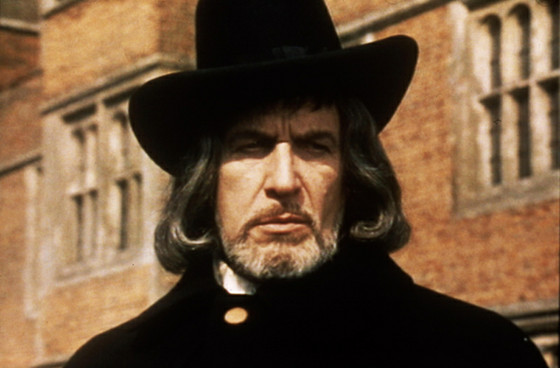
It’s highly possible that kids these days (I just rolled my eyes at that line, too) have no real context for which to place Vincent Price, the macabre master, who at one point in his lustrous career was known worldwide for his scene-stealing roles as villainous nasties. Well, to those kiddies we suggest a strong dose of Michael Reeves’ wantonly cruel 1968 masterpiece, Witchfinder General.
Incredibly influential, mordantly violent, and rooted in England’s bleak history, Reeves’ final film––he died soon after production wrapped, at the young age of 25, having already completed seven films!––spawned scores of imitators and provided Price with perhaps his finest, surely his most sadistic role.
Film historians claim accuracy in this 17th century set tale of Matthew Hopkins (Price), witch hunter (which back then, equated to woman hater), out to terrorize the English countryside.
It rattled censors at the time and today still tests one’s threshold for terror.
16. Let the Right One In (2008)
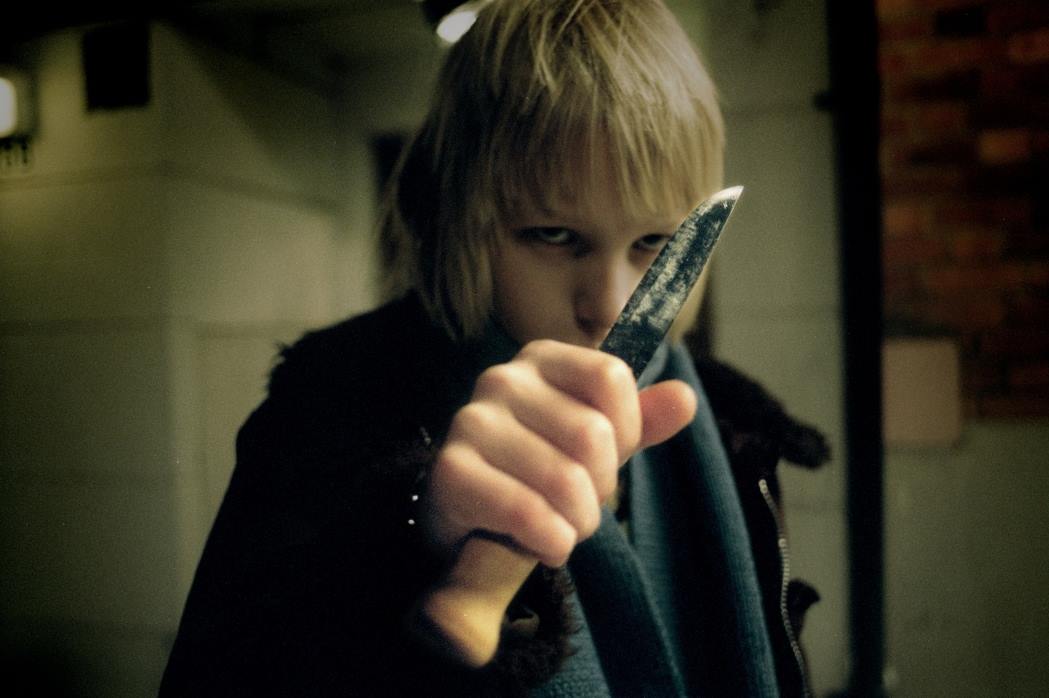
With a startling arthouse sensibility and refreshingly sophisticated emotional depth, Tomas Alfredson’s Swedish vampire film Let the Right One In has become an enduring classic and a high water mark in the overflooded vampire milieu. Adapted by John Ajvide Lindqvist and based off his excellent 2004 novel of the same name, this film is a brilliant merger of romance, horror, coming-of-age comedy, and slow-stirring tragedy.
Oskar (Kåre Hedebrant) and Eli (Lina Leandersson) are both luminous as two lost and lonely kids—one a vampire, one a weirdo, both outcasts—who for a time, need one another, and need to make sense of the world. Austerely elegant visuals, inventive and endearing re-imaginings of familiar vampire tropes, and pensive yet persuasive symbolism and spectacle, this is modern horror done to perfection. It’s lackadaisical pacing works like a charm in creating a world for the viewer to get utterly engrossed in, ensuring that Let the Right One In is felt in the gut as it strangely and profoundly stirs the heart.
15. The Birds (1963)
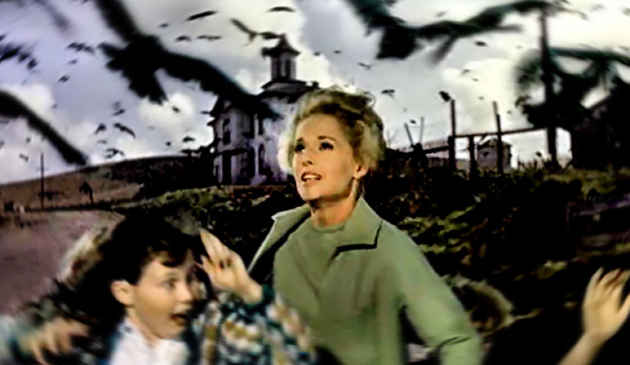
Alfred Hitchcock’s groundbreaking horror-thriller, adapted from the 1952 novelette from Daphne du Maurier (one of Hitch’s favorite writers, both “Rebecca” and “Jamaica Inn” had previously became wonderful adaptations for the Master of Suspense), casts Tippi Hedren, Rod Taylor, Suzanne Pleshette, and Jessica Tandy in the small seaside town of Bodega Bay, California, just as a series of sudden, unexplained, and increasingly violent bird attacks ensue.
The following human drama, sharp social commentary, and unrelenting dread was enough to give even the most jaded of audience members a serious case of ornithophobia, and no one who’s ever seen The Birds has ever looked at an inconspicuous flock of birds the same way ever again. Don’t miss it.
14. Horror of Dracula (1958)
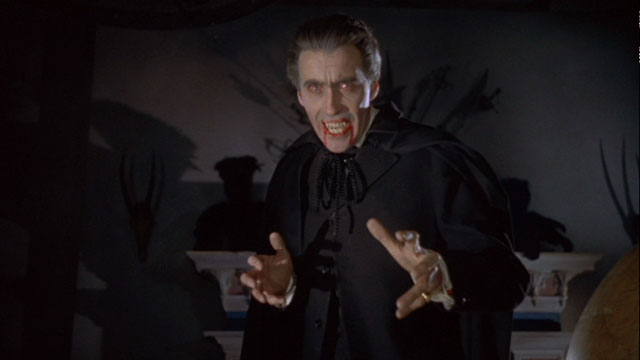
Hammer Films specialized in Gothic horror and bold re-imaginings of iconic movie monsters, and while 1957’s The Curse of Frankenstein is also a formidable film, it’s director Terence Fisher’s lurid revision of Bram Stoker’s classic that really pops in the mass cult’s collective unconscious.
Horror of Dracula stars an imperious and monstrous Christopher Lee as Dracula, a refined and cerebral Peter Cushing as Abraham Van Helsing in a somber, sexy, and chillingly circumstantiated vampire vintage. Jack Asher’s Technicolor lensing is vibrant and startling, as is James Bernard’s spine-tingling score in this suspenseful, gore-soaked masterpiece of menace and enjoyable alarm.
13. The Wicker Man (1973)
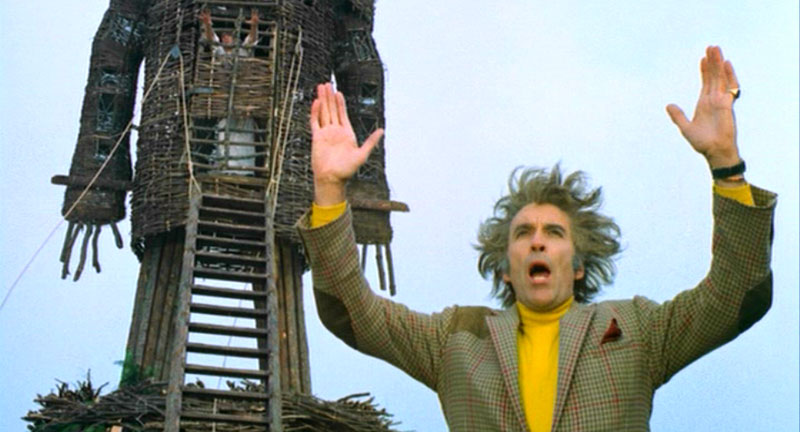
Robin Hardy’s The Wicker Man is a decidedly imaginative mixture of murder mystery, horror movie, folk musical, and pagan legend. Written by Anthony Shaffer (Sleuth) from David Pinner’s 1967 novel “Ritual”, this influential British film was famously touted by Cinefantastique to be “the Citizen Kane of horror movies” and who are we to say anything different?
Sgt. Howie (Edward Woodward) is an uptight Scots policeman investigating the disappearance of a young girl, Rowan Morrison (Gerry Cowper) on Summerisle, a remote Hebridean island. Summerisle is the sort of place where the head cheese, Lord Summerisle is played by Christopher Lee, so there’s a huge fucking red flag right away. Britt Ekland is there, too, in full babe mode, there’s a naked librarian played by Ingrid Pitt and all the pagan May Day hoopla have Howie groping for his Christian cross.
“You’ll simply never understand the true nature of sacrifice.” The Wicker Man offers up many fiendish quirks, kinks, and a concluding squeaker of a curveball you won’t soon forget.
12. Don’t Look Now (1973)
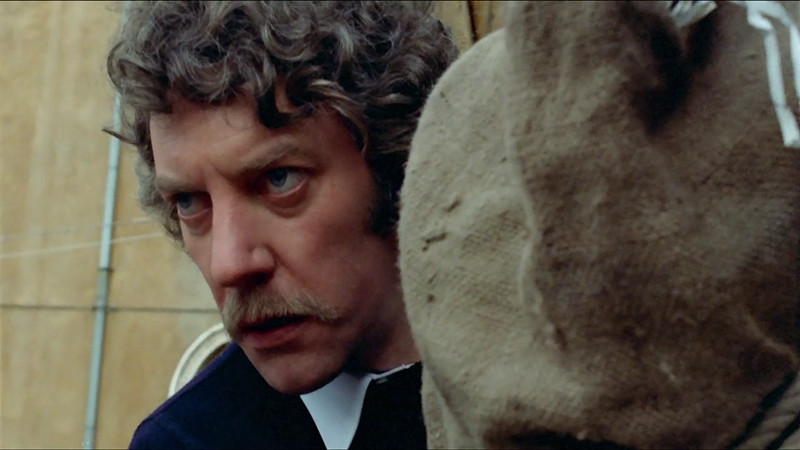
A troubling, stunning, and sensual masterpiece, Nicolas Roeg’s Don’t Look Now is an elegant tragedy and may also offer cinema’s best use of the color red.
Following the tragic death by drowning of their daughter, broken, grieving, and shattered parents John (Donald Sutherland) and Laura (Julie Christie) seek sanctuary and healing in the visually labyrinthine city of Venice. But even in so lovely a locale they cannot escape the feeling of menace, impending doom, and inescapable death.
Roeg’s signature visual style, a fragmented, haunting, and cryptic combination of abrupt cuts, and jolting juxtapositions, jumps into overdrive. Venice transforms into a watery city of ghosts, populated by apparitions, decaying churches and meandering canals. Themes of death, loss, intrigue, and eroticism hound John and Laura as nostalgia and intangible terror plague their every step. Few films are this powerful, this dismaying, and, ultimately, this tormenting, all while being a sensory experience in crumbling grace and terrible loss. Don’t Look Now is so stunningly sensuous that it makes it impossible to turn away.
11. Jaws (1975)

Steven Spielberg’s ambitious blockbuster is the ultimate man versus nature narrative that also wisely asserts that if you’re going up against a great white shark, “you’re gonna need a bigger boat.”
Adapted from the 1974 Peter Benchley best-seller, Jaws unfolds in the New England tourist trap of Amity Island. This beach community is soon terrorized by a man-eating shark as police chief Martin Brody (Roy Scheider) teams with ichthyologist Matt Hooper (Richard Dreyfuss) and a severe ship captain named Quint (Robert Shaw).
German critic Georg SeeBlen writes, “If Jaws was a kind of skeleton key to the angst of the 70s, from puritanical fear of sex to the war in Vietnam, then its heroes were models of America’s wounded masculinity, who meet and join to face a test of character.”
Aided immeasurably by John Williams’ famous and unforgettable score, this Hitchcockian thriller is a tautly directed pièce de résistance of primal fears and exhilarating adventure. Jaws is the real deal with frightening sequences that haunt and give a turn decades on and startle beachgoers every summer and probably always will.
10. The Texas Chain Saw Massacre (1974)
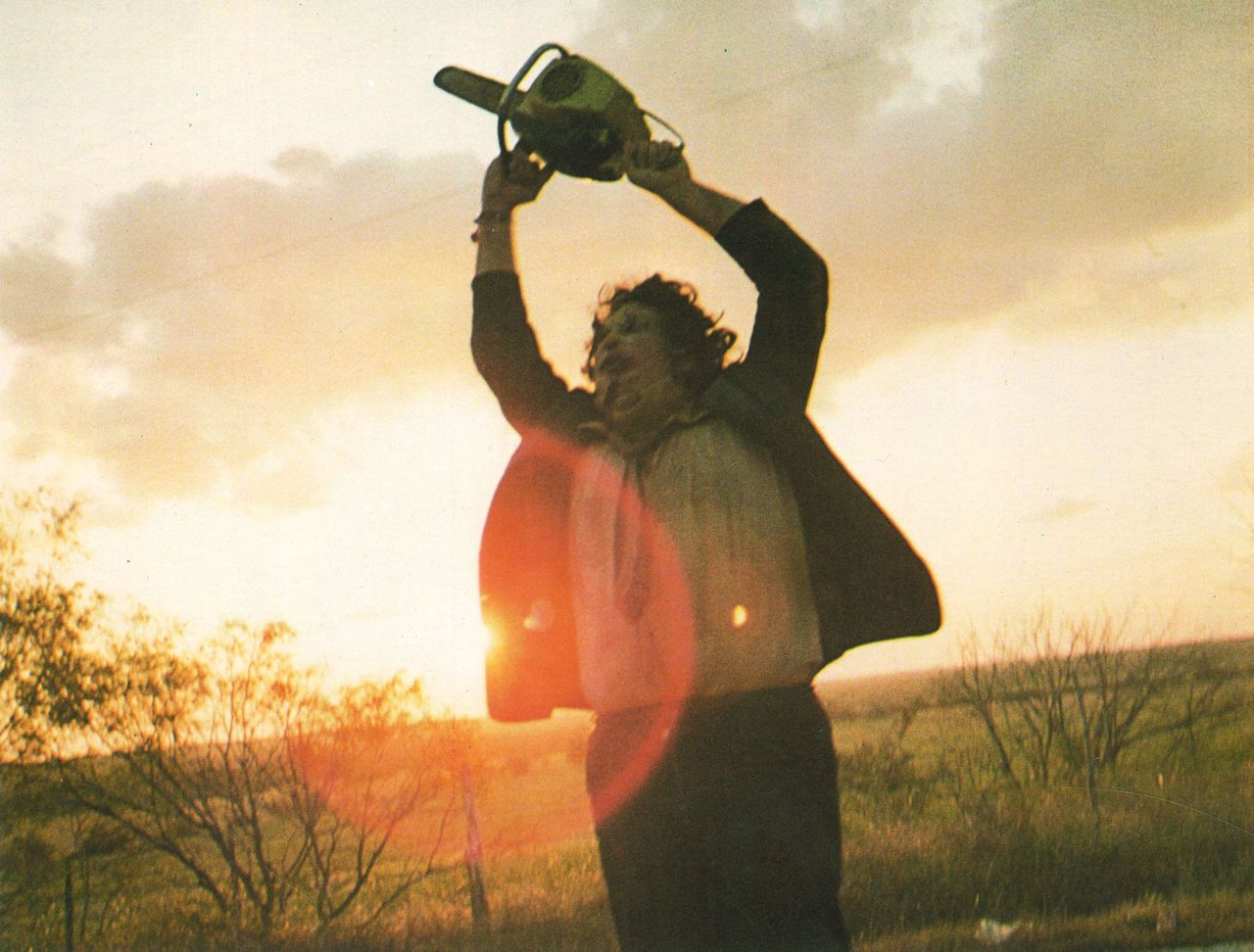
Tobe Hooper’s low-budget bombshell of a horror film The Texas Chain Saw Massacre unleashed a hurricane of dissention and controversy for all of its exploitative and shocking content. Partially inspired by the real-life story of serial killer Ed Gein, Hooper’s film, which effectively opens like a documentary, is relentlessly paced and purrs with a dangerous ferocity.
Sally Hardesty (Marilyn Burns) and her paraplegic brother Franklin (Paul Partain) along with a small group of friends visit their family’s old farmhouse in bucolic Texas. In no time these unlucky standard-bearers meet the people next door, a family of deranged and deadly reprobates including the chainsaw-swinging Leatherface (Gunnar Hansen), who has a rather eye-catching mask made of human skin.
A backwoods showpiece of terror stemming from a deformation of the American family, Hooper displays amazing restraint in his use of gore while still maintaining immense terror through subtle touches, excessive claustrophobic elements, and a lucid nightmare scenario. At once profoundly personal, fiercely disturbing, and strongly artistic, The Texas Chain Saw Massacre is a nerve-wracking stroke of sinister genius.
9. The Shining (1980)
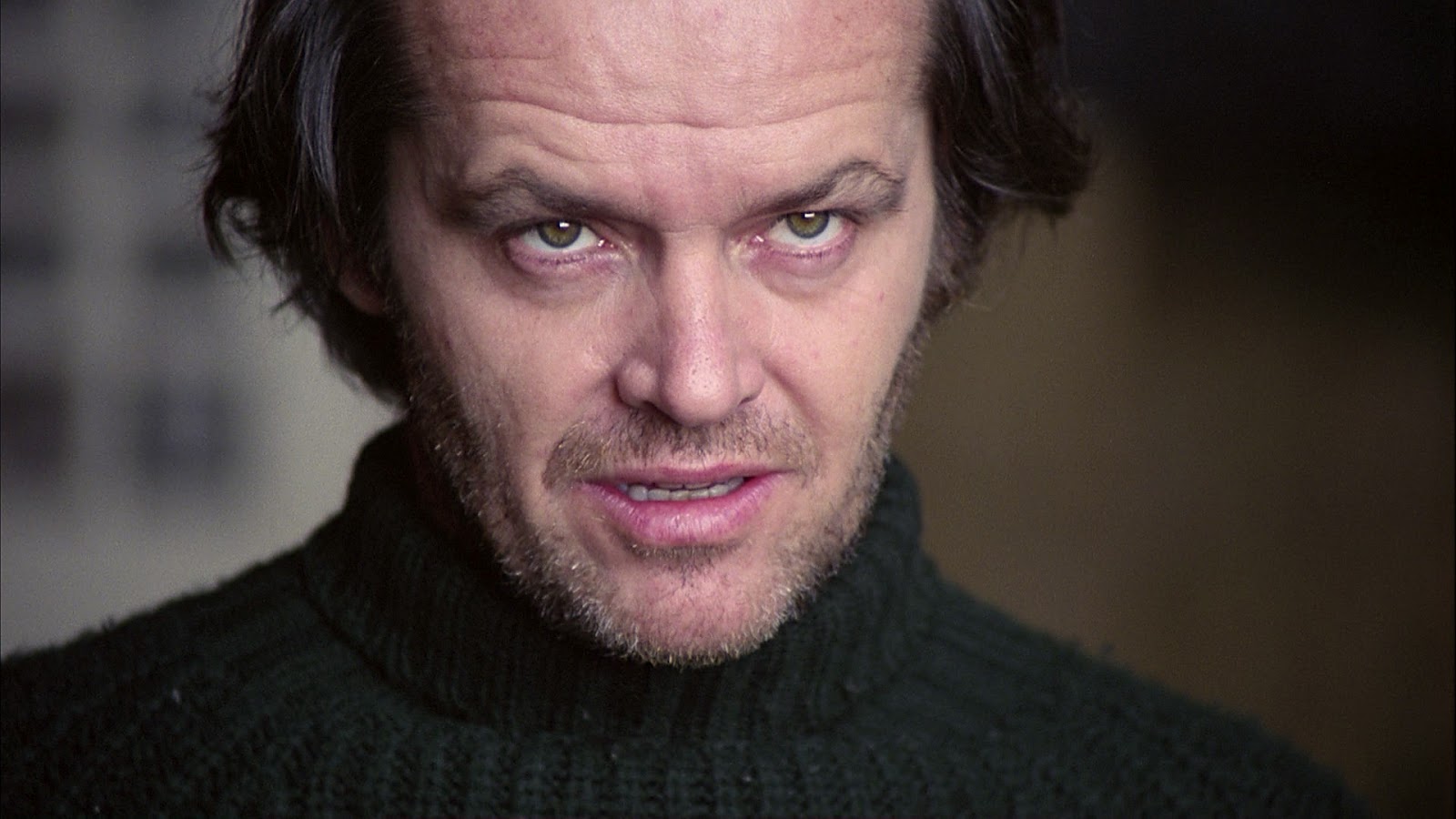
With an impassioned love for detail, technicality, and formalism, Stanley Kubrick’s The Shining is an eerie and effective brew of arthouse genuflection and haunted house tropes. Jack Nicholson is further out there then Sputnik in his over-the-top portrayal of writer’s block-stricken recovering alcoholic Jack Torrance, caretaker for the season at the remote Overlook Hotel.
While eschewing much of what made the Stephen King best-seller so compelling, Kubrick instead opts for atmospherics and technical bravado over authentic drama, but the results largely make ghoulishly good (if you can “overlook” Shelley Duvall’s rmiscalculated performance and Scatman Crothers’ utterly atrophied potential).
But, for all its lapses––and it’s a terribly flawed and indulgent genre exercise––the ad-libbing “Heeeeere’s Johnny!” from an axe-wielding Jack has a delirious charisma. Also, and most notably, a tremendous commendation is owed to Krzysztof Penderecki for his magnificently terrifying soundtrack which heightens and refines many memorable set pieces. The Shining is a questionable classic with obvious appeal and allowable partition that’s catnip for Kubrick fans.